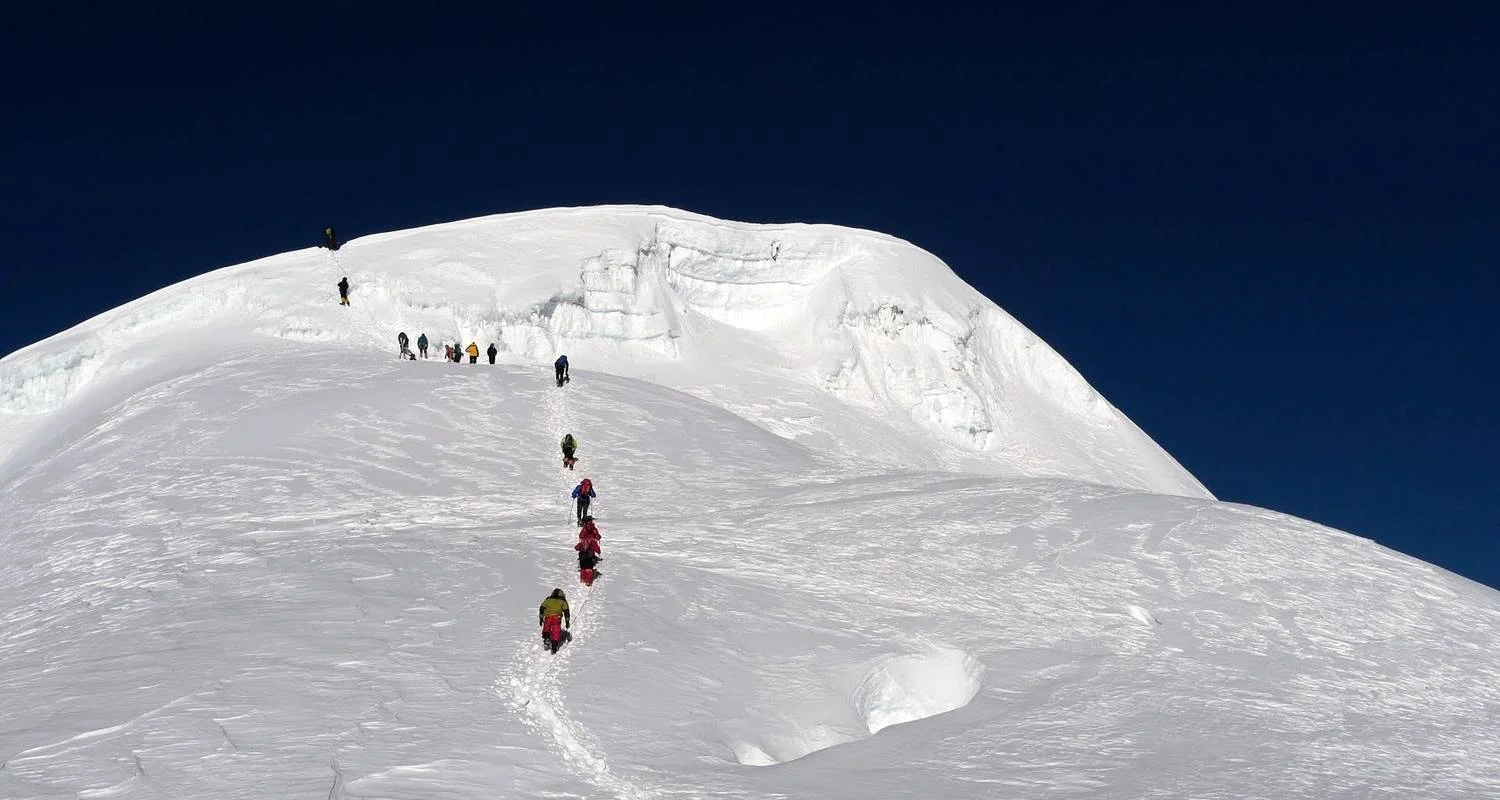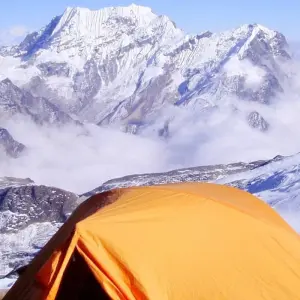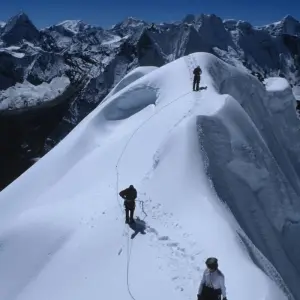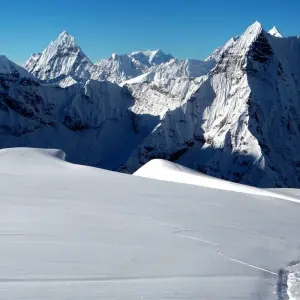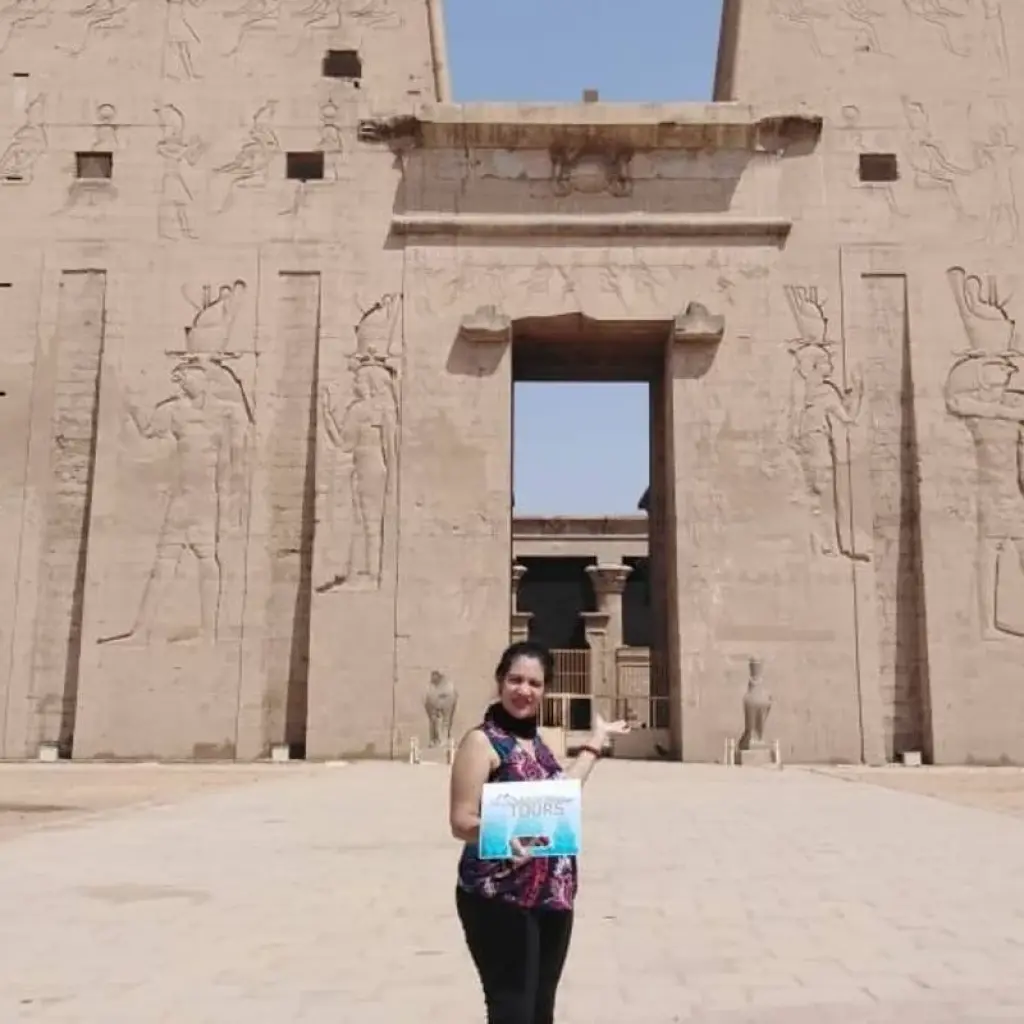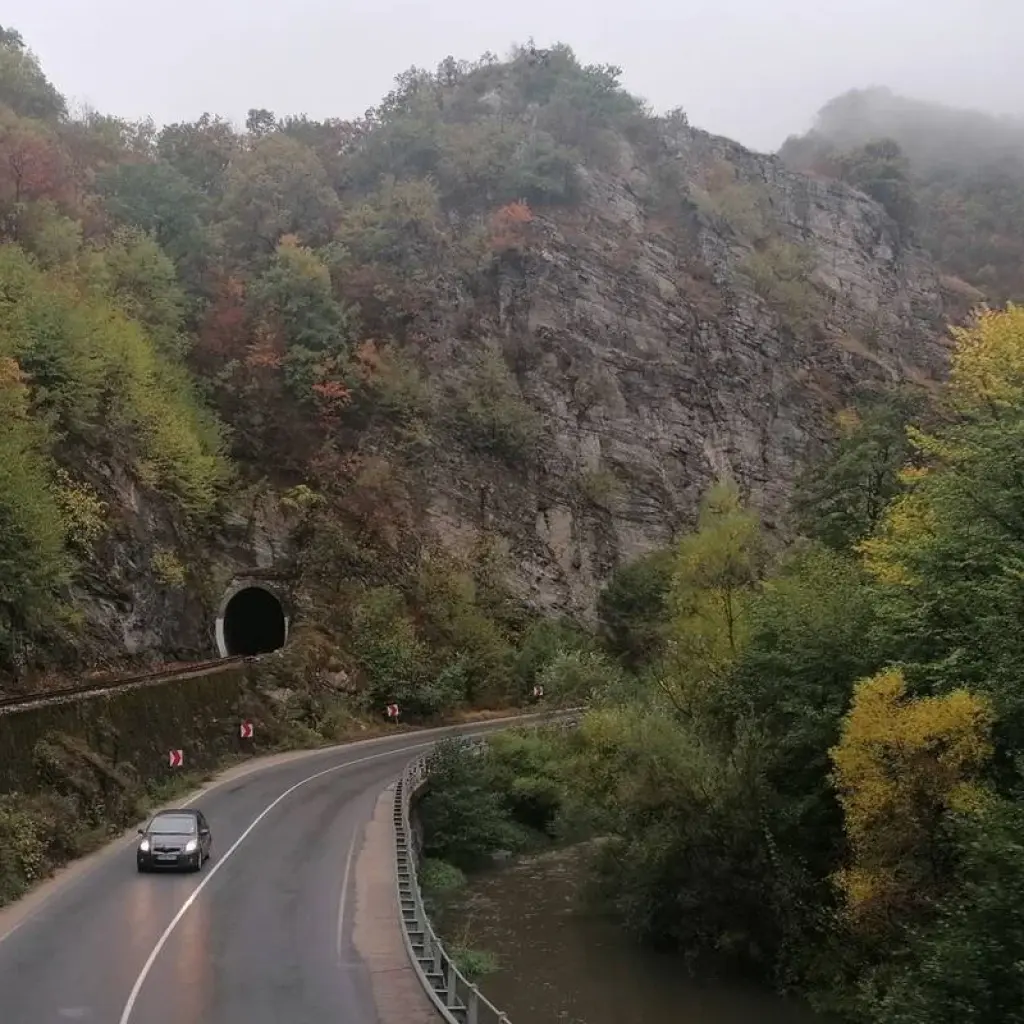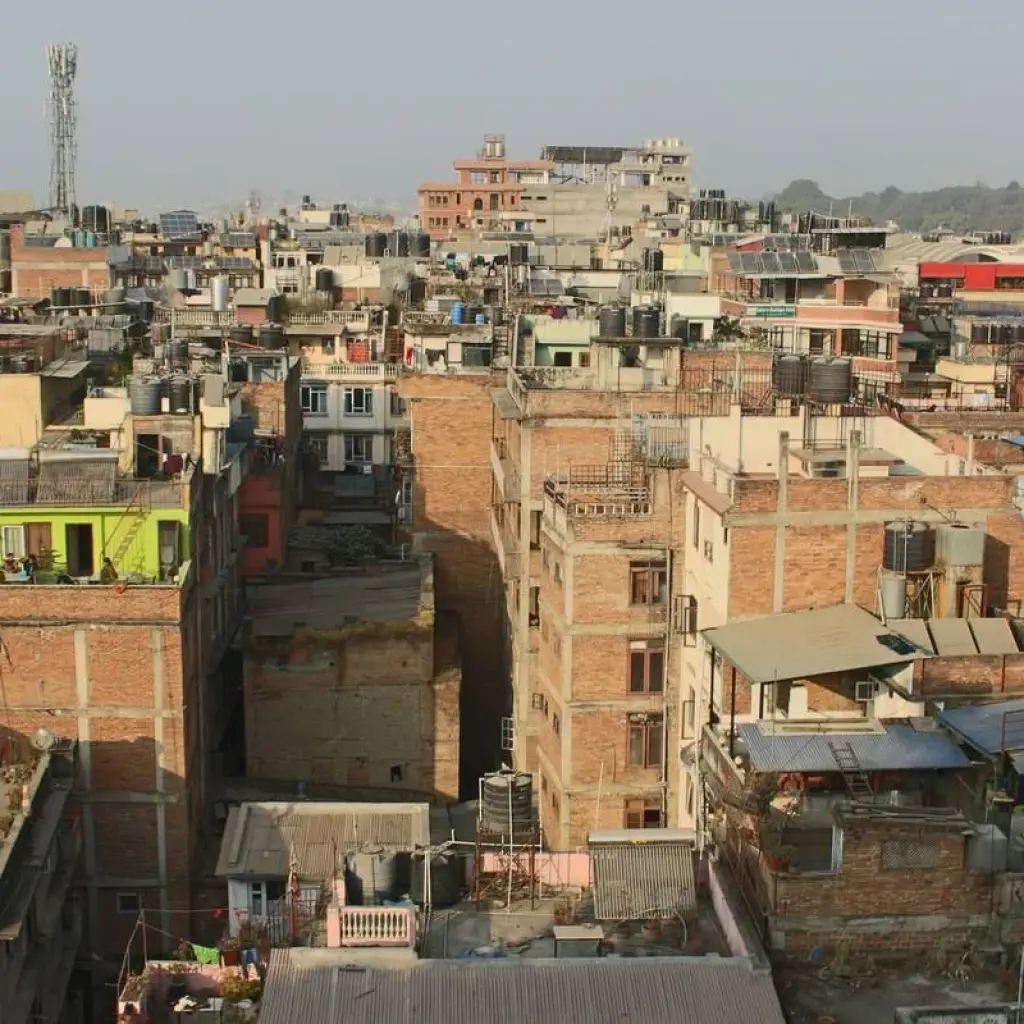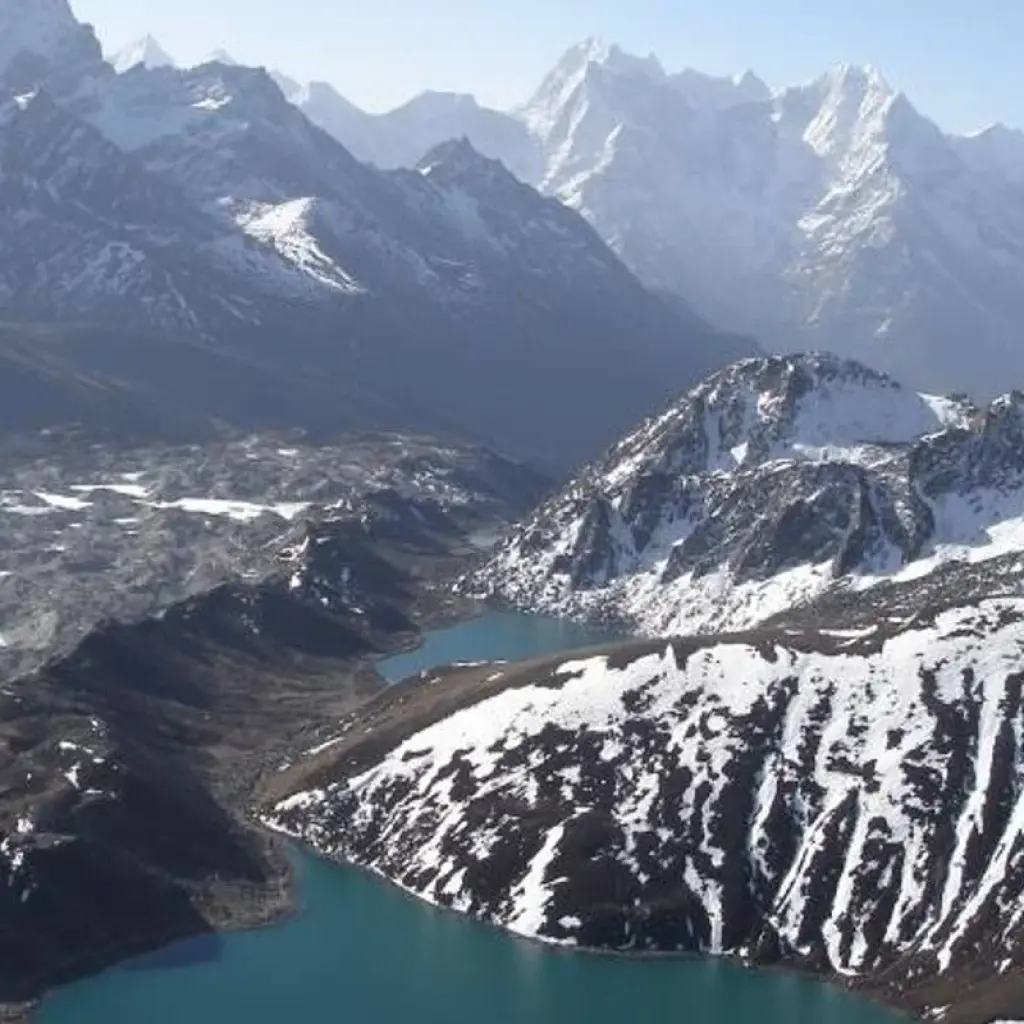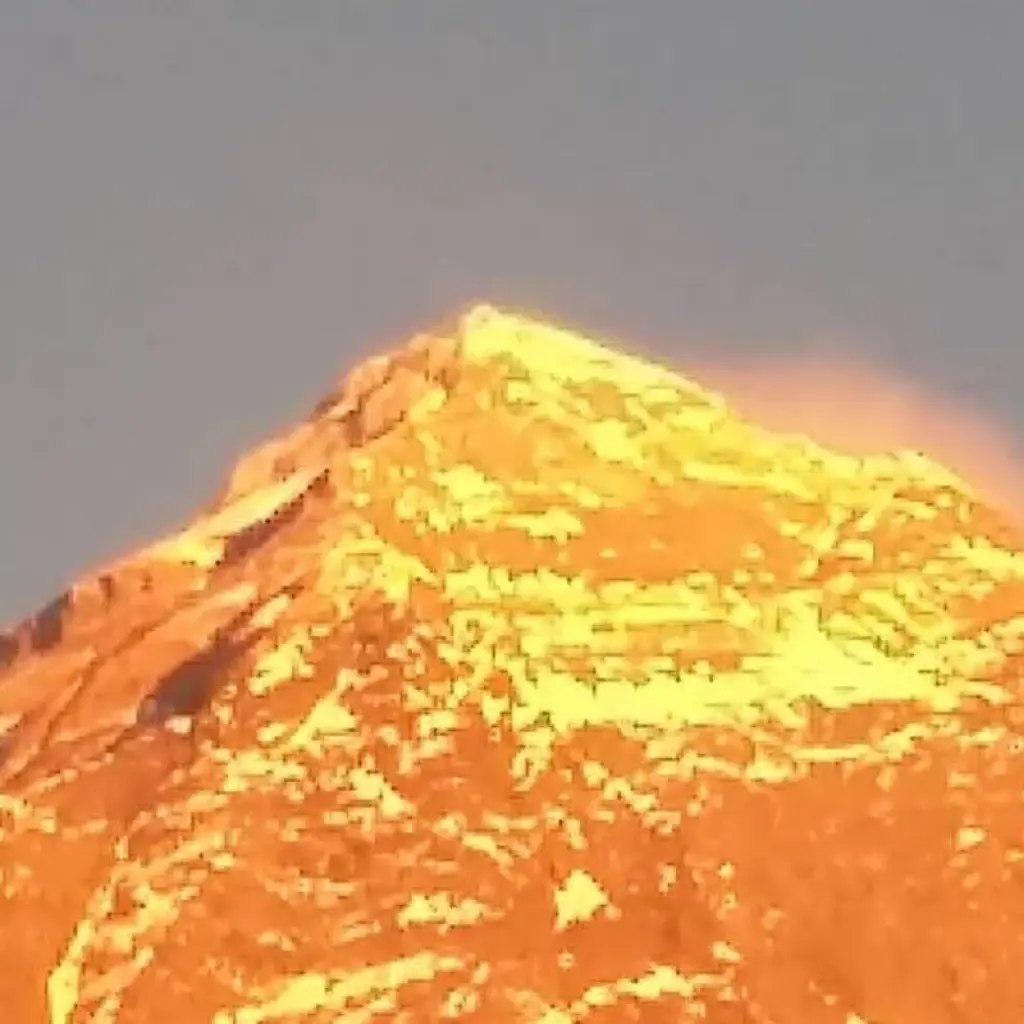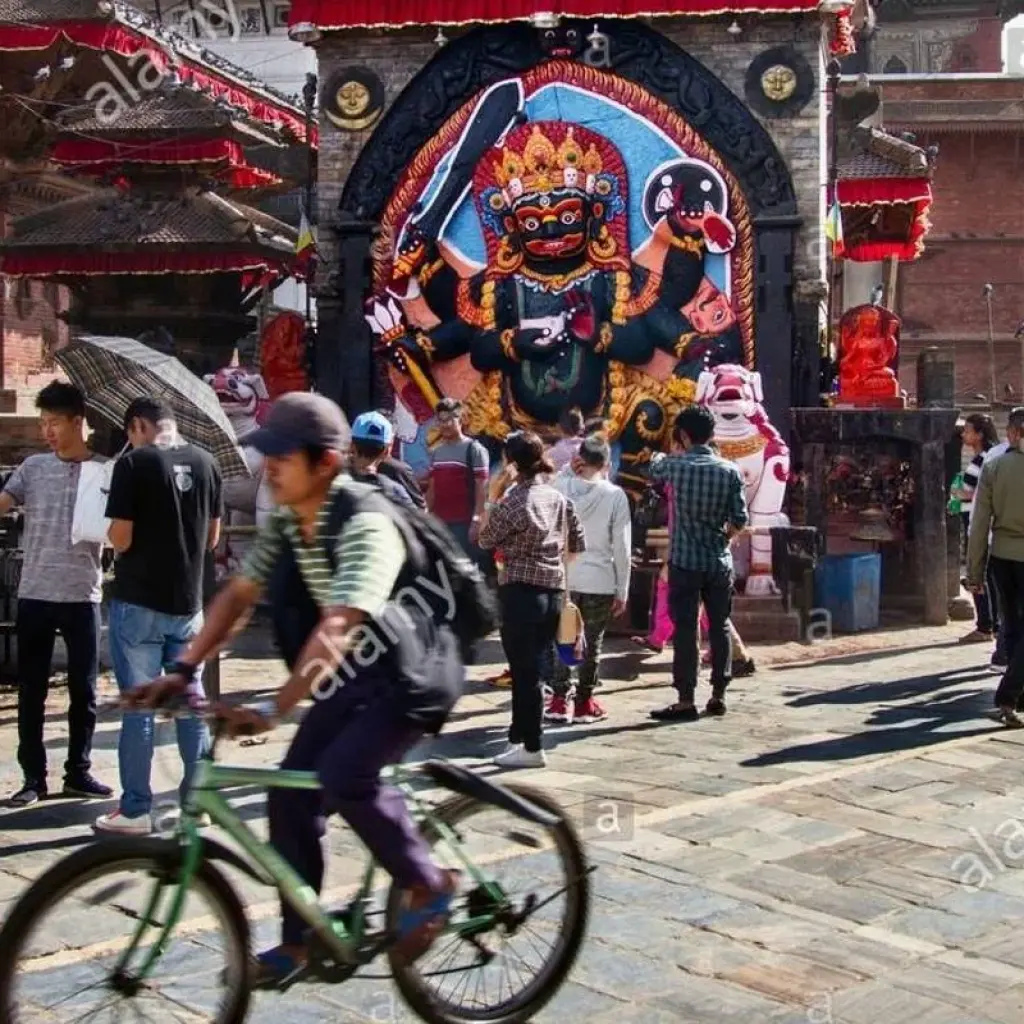Mera Peak (6476m) is the highest trekking peak in Nepal. Mera peak climbing expedition takes us away from the track leading to Everest Base Camp to the sparsely-inhabited Hinku Valley. We walk through the beautiful high alpine environment, where Mera Peak towers over the valley. The ascent is a non-technical climb; anyone who has strong willpower, has average fitness, and is comfortable with ice-ax and crampon can reach the summit of this beautiful mountain. At the summit, we are rewarded with amazing views of five of the six highest mountains in the world - Everest, Kanchenjunga, Lhotse, Makalu, and Cho Oyu: which makes all the hard work worthwhile. Again, despite the fact that Mera Peak Climbing expedition is technically elementary, fresh snowfall next to numerous deep crevasses add challange.
If you have already done a high altitude trek and coped well, then Mera is the perfect next adventure. The extreme altitude does mean that no matter how fit you are, climbing Mera Peak will be a tough challenge. The challenge is very much about stamina and endurance though, as no technical skills are needed to complete the climb. At this altitude the oxygen content in air is less than half of what it is at sea level - for this reason we would not recommend you take on Mera as your first high-altitude trek. You need to understand how your body acclimatizes to altitude before taking on a climb like Mera Peak.
This itinerary of Mera peak climbing takes climbers through Paiya and Pangom which takes longer days but gives ample acclimatization time thus less chances of altitude sickness. Few years before teahouse trek/climb to Mera used to be only through Zatrwa La which takes climbers directly to very high elevation increasing the risk of altitude sickness. But now, as in Paiya/Panggom route new teahouses are opened we have been running our trek to Mera Peak through this route. Mera peak climbing via Paiya and Panggom route is perfect to give time for your body's acclimatization process.
Like all other treks in the Everest region, you start your Mera Peak escapade with the exciting Kathmandu to Lukla flight with great mountain views all the way. After assembling more of the crew at Lukla, our route takes you south around the mountain to Paiya and Pangom. The early days of this route are very quiet - you are travelling through an area that is terraced and heavily farmed. The trek then moves on up the Arun Valley to Khote. At this point, you are well above the tree line. Mera Peak towers over the route on your right all the way. At Khote you stop for two nights for an acclimatization trek which takes you up a hill immediately opposite Mera Peak, where you can get a great view of the challenge ahead of you.
From Khote, the trail heads north to Khare where two nights to aid aclimatization. The acclimatization day will also be used to practice glacier traverse techniques with your guides.
Backed by the acclimatization and ice climbing practice at Khare, we now begin our ascent on Mera Peak. First, we trek to Mera Peak Base Camp and from here; we make our real climbing adventure to Mera High Camp and eventually to the summit of Mera Peak. The summit extends awe-inspiring panoramas adorned with snow-capped peaks of Everest (8,848m), Cho-Oyu (8201m), Lhotse (8,516m), Makalu (8,463m), Kanchenjunga (8,586m), Nuptse (7,855 m) and Chamlang (7,319 m) amongst many more above 6,000m and below 8,000m.The summit day is a tough grind up the glacier, followed by a short sharp scramble up an ice-wall using crampons and ice axe. Your guide will put in a fixed rope for your safety.
After summiting, you descend back to Khare, where you will stay overnight before tracking back down the Arun Valley with the steep face of Mera Peak on your left. Even though you will be descending to lower altitude, as always in Nepal this doesn't mean that you will just go downhill, there will be plenty of uphill too, even on your descent! Subsequently, we return back via Kothe, Thuli Kharka, and cross the tough Zatwa La pass to begin your final descent back down to Lukla.
Why Mera Peak Climbing?
Mera peak is highest trekking peak of Nepal (altitude - 6476m)
Non-technical climb suitable for novice climbers who have coped well in high altitude in the past
Beautiful, less-touristy trekking route through lush forest of Sagarmatha National Park and Makalu Barun National Park
Close-up view of the 5 highest peaks in the world - Mount Everest (8848m), Lhotse (8516m), Kanchenjunga (8586m), Cho Oyu (8201m) and Makalu (8481m) - from high camp and summit
Ample acclimatization days
Pre-climb training before the summit push
Is Mera peak climbing adventure for me?
If you have done demanding trek like Everest base camp or Kilimanjaro and have interest in climbing, then Mera Peak climbing is for you
Trekking and climbing above 5000 and 6000 meters, therefore high-altitude trekking experience is a must. No previous climbing experience required. Experience in abseiling; using crampons, ice-ax, walking roped-up will be an advantage.
Above average physical fitness required as you will be climbing under challenging situations (thin air, extreme cold, ice/snow, and windy).
The maximum altitude reached is 6476metres. En route, you cross high mountain passes, rivers, and glaciers.
On average 6-7 hours of trekking most of the days. Grueling summit day with 8-9 hours of walking on icy conditions
The facilities at teahouses are basic with squat toilets in some places
Mera peak climbing is not for you if you have problem with your heart, lungs and Knees.

